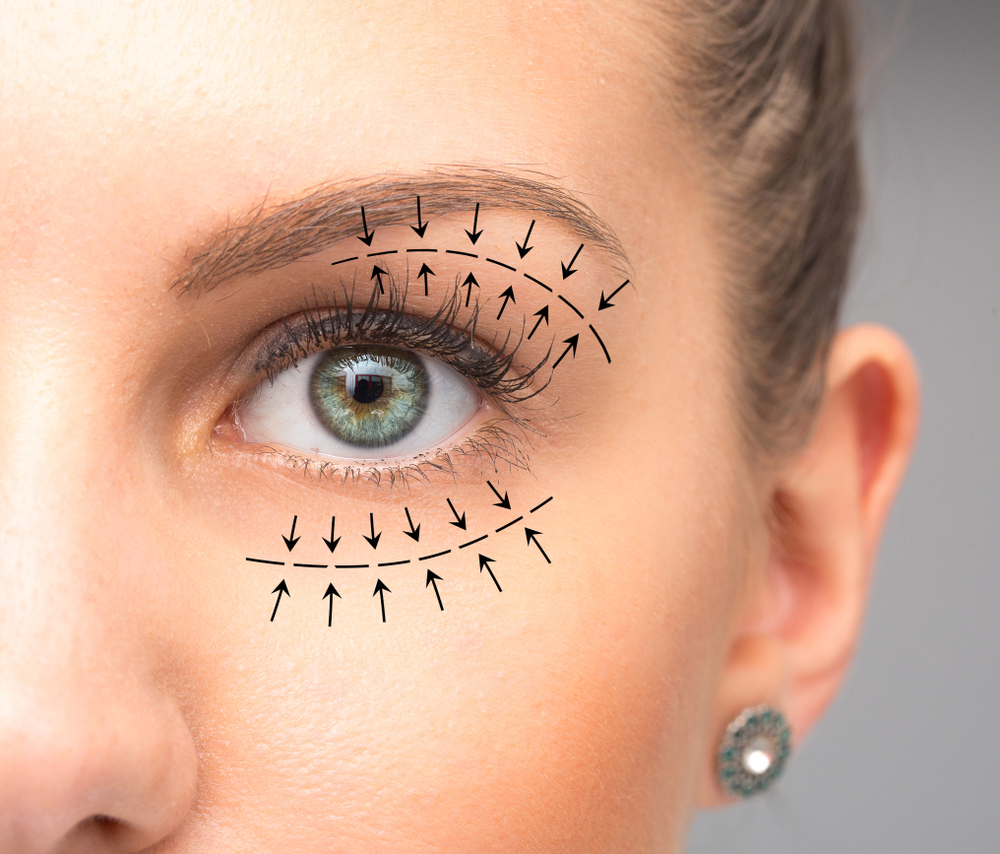Some people think that a panniculectomy is a type of extended tummy tuck, but it’s not. A tummy tuck, or abdominoplasty, is a cosmetic procedure. A panniculectomy, which has cosmetic aspects, is largely done for health reasons. The pannus, or panniculus, is an apron of skin and fat that hangs down at least to the pubis. In some people, the pannus hangs down to their knees. Because of this, the person has trouble seeing to their hygiene and are often subject to skin infections, ulcers and rashes due to the accumulation of sweat, dirt and friction and the fact that the blood supply to the area has been compromised.
Some patients also have hernias that need to be repaired at the same time as their pannus. The pannus can be so large that it can even cause back ache and interfere with the person’s ability to function. This, and not just the improvement to the person’s looks, is why a patient would seek a panniculectomy. It is also why some health insurance providers cover panniculectomy when they wouldn’t cover abdominoplasty. A panniculectomy require the skills of a team that is experienced in the procedure.
What Causes a Pannus?
A pannus is often a complication of bariatric surgery. In bariatric surgery, the patient has some kind of alteration done to their digestive tract that drastically reduces the amount of food they can take in at one time. Types of bariatric surgery include sleeve gastrectomy and gastric bypass. Other types of bariatric procedures, such as gastric band and gastric balloon are less invasive. These procedures lead to rapid weight loss and often the resolution of such weight-related conditions such as diabetes, sleep apnea, or high blood pressure. But the weight loss is so rapid that the patient is sometimes left with lots of excess skin and fat, including the pannus.
Before the Panniculectomy
The surgeon and the patient consult well before the procedure. A good candidate for panniculectomy has a realistic expectation of the surgery and is in overall good health outside of the skin conditions that are caused by their pannus. During the consultation, the doctor needs to take into account how much the patient can exercise and their overall activity level, their diet, whether they have difficulty going to the bathroom and even what kind of clothes they like to wear. The surgeon needs to examine the patient’s abdomen to determine whether they’re short or long-waisted, which helps determine the surgical technique to be used in the panniculectomy. They’ll take note of any abdominal scars and the condition of the muscles in the area. If the pannus extends to the person’s belly button, the belly button may need to be repositioned or removed altogether, though it can be reconstructed.
The surgeon must also discuss the risks that come with panniculectomy and the complications that may arise from the surgery. The surgery may be contraindicated in a patient who smokes, has cardiovascular disease, lung disease, uncontrolled diabetes, high blood pressure, or problems with blood clotting. People who have deep scars from previous surgeries may not be the best candidates for panniculectomy. Patients who are still very obese are at greater risk for complications from the surgery.
Preparing for Panniculectomy
Since the panniculectomy is an elective surgery, the patient can prepare for it well in advance. The doctor or nurse will tell them what they need to do to increase the odds for a successful and complication-free surgery.
If the patient hasn’t had bariatric surgery, they’ll need to keep their weight stable for at least six months. If they have had bariatric surgery, they’ll need to keep their weight stable for at least 18 months. If they smoke, they must stop smoking at least a few weeks before the surgery. They may need to discontinue medications that can compromise their healing or lead to greater bleeding. The patient will need to fast the night before their surgery.
The Surgery
On the morning of the surgery, the patient should leave all jewelry at home and wash with antibacterial soap before they come to the facility. They should not use lotions, creams or perfumes, especially on their abdomen. Just before the surgery, the medical staff gives the patient an identification bracelet and a hospital gown. They will make sure they haven’t had anything to eat or drink just before they came in. A nurse will start an intravenous line in the patient’s arm, then take them to the operating room. The operating room nurse will then check their blood pressure and place a patch on their skin to monitor their heart rate.
The patient is placed under general anesthesia, which means they are asleep during the entire procedure. The doctor or OR nurse places draperies over the area, and the abdomen is marked, sometimes in a grid pattern. The doctor makes an incision around the natural crease that is just above the pubis. Some doctors inject tumescent fluid around the patient’s abdomen first. This is a saline solution that causes the area to swell and become more rigid. It separates the layers of tissue and makes it easier for the doctor to operate.
The incision is extended sideways towards upper edges of the iliac crests, which are the upward curves of the two halves of the hip bone. Some surgeons make a vertical cut that extends down to the patient’s pubic bone. The surgeon continues to make incisions through the Fascia of Scarpa, a membrane that’s found in the abdomen and makes up some of the abdominal wall.
At that point, the surgeon uses scissors to snip away at the excess skin and the underlying layers of tissue and fat until a flap is created. Some doctors continue to use a scalpel. All the while, blood vessels in the area are cauterized by the operating room nurse and fluid and blood are suctioned away. The surgeon then uses scissors or a scalpel to cut away at and release sections of the flap. These sections are placed to the side by the OR nurse. Unlike abdominoplasty, the surgeon does not tighten the patient’s abdominal muscles, though an abdominoplasty can be performed at the same time as the panniculectomy. Indeed, other skin reduction procedures are often performed at the same time as a panniculectomy, including arm lifts and thigh lifts.
In one type of panniculectomy, the flap is held up and away by adjustable retractors to make it easier for the surgeon to see the surgical field. This is especially helpful if the patient has an especially large pannus.
When the excess tissue is removed, the surgeon pulls the skin together and sutures the surgical wound in several layers, careful of the Fascia of Scarpa and the deeper layers of the skin. They can use permanent stitches or stitches that the patient’s body absorbs over time. They add small suction drains to take away excess blood and other fluid. The drain exits through a small hole made in the pubic area. The doctor puts a compression garment or a compressive binder on the patient to prevent blood clots from forming. The patient wears a compression garment until the fluid output is less than 30 milliliters a day. This can take a few weeks. Some patients continue to wear the compression garment for a while after the drains are removed because it feels comfortable.
Panniculectomy surgery lasts about three hours for most patients, though it can last as long as five hours. The average amount of skin and tissue removed during a panniculectomy is about 16 pounds, though it can be as high as 49 pounds.
Recovery from Panniculectomy
Despite the patient having general anesthesia, a panniculectomy can be an outpatient procedure. This means that the patient is taken to a recovery room and monitored for a while, then discharged. However, the average stay in a facility is three days.
After their surgery, whether it is outpatient or inpatient, the patient will need to be taken home and have someone stay with them for a night or two to make sure there are no problems. They’ll also need help with daily tasks for at least another week and should not do any strenuous activity for at least a month. Most patients are able to go outside about five days after their surgery. They can take a shower or sponge bath 72 hours after the surgery.
The patient will have started on pain medications while they’re still at the facility and the doctor will have prescribed pain medications and antibiotics that they can take at home. Ideally, the prescriptions are filled before the patient comes home so the medications can be on hand when needed. Any discomfort, swelling and bruising goes away after a time, and the more superficial stitches are usually removed after about a week. Over time, stitches the surgeon placed deep inside the body will be absorbed.
It is important to rest often and have a good, high fiber diet, since the inactivity caused by the recuperation may lead to constipation. Patients who’ve been given narcotics for pain are at special risk for constipation as narcotics slow down the workings of the gastrointestinal tract. The patient should continue to avoid anticoagulants until their doctor gives them permission to take them and should not drink alcohol for at least three weeks so they don’t retain fluid.
Most patients who have panniculectomy are happy with the results. With the pannus gone, they are able to attend to their hygiene, move around easily and wear the clothes they want to wear.
Call Us for More Information About Panniculectomy
If you have an unsightly apron of flesh and tissue that hinders your movement, causes skin conditions and makes it impossible for you to even wear the clothes you want to wear, consider us here at Georgia Plastic & Reconstructive Surgery in Marietta, GA. We can set up an appointment between you and our plastic surgeon to discuss the benefits of panniculectomy. Contact us today to schedule your consultation!




